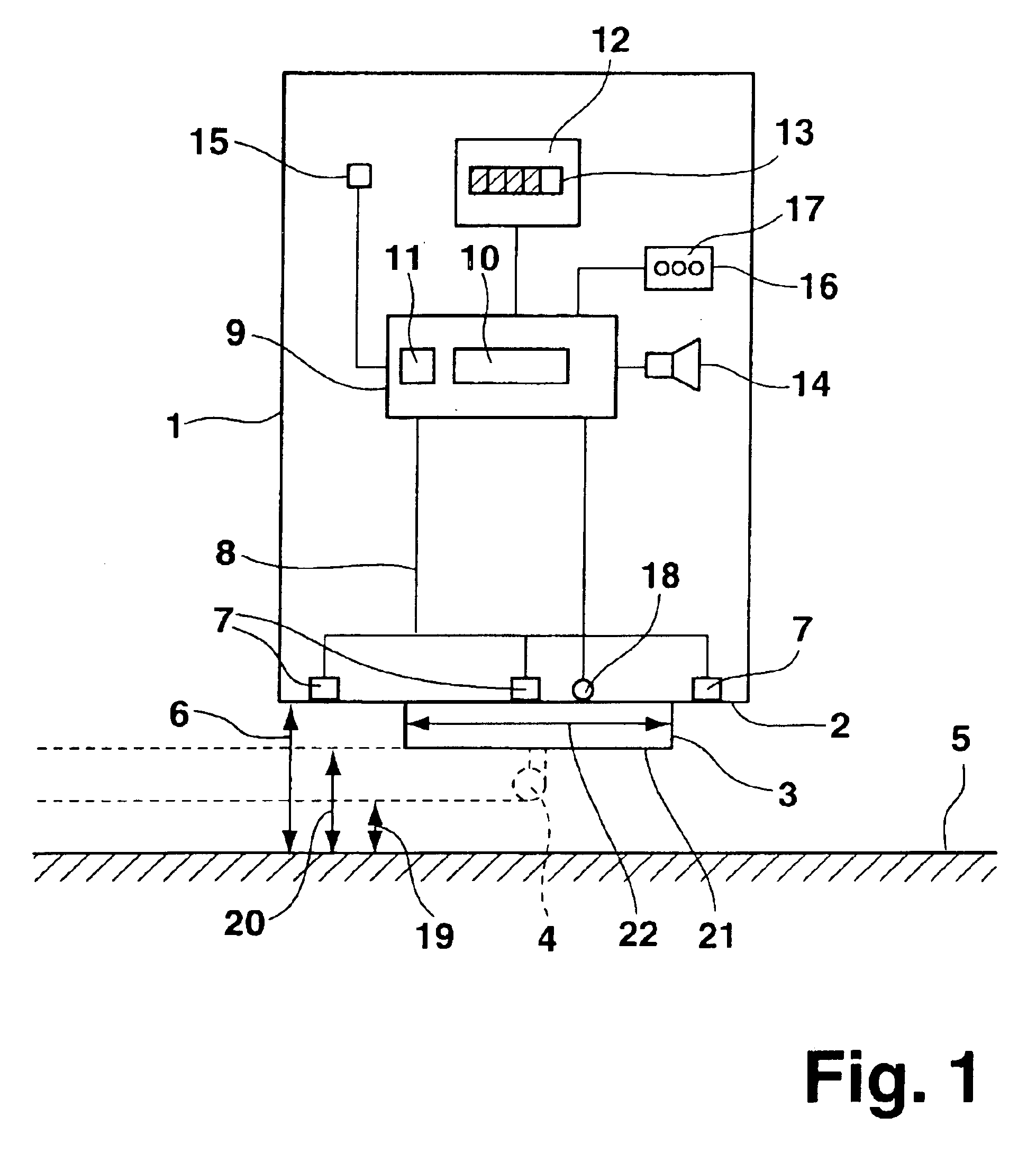Distance-measuring device
a technology of distance measurement and measuring device, which is applied in the field of distance measurement system, can solve problems such as inability to detect, and achieve the effects of avoiding irregularities, increasing resolution, and full maneuvering capability of the vehicl
- Summary
- Abstract
- Description
- Claims
- Application Information
AI Technical Summary
Benefits of technology
Problems solved by technology
Method used
Image
Examples
Embodiment Construction
The present distance-measuring device is used in particular for motor vehicles, and in this context, is used primarily for driving maneuvers at low speeds, for example, when parking in a parking space. Components jutting out on any side of the vehicle beyond the remaining contour of the vehicle may be taken into account. In the following, the present invention is explained in terms of an exemplary embodiment in which components are mounted on the rear of the vehicle so that they jut out beyond the bumper.
FIG. 1 shows a motor vehicle 1, on whose vehicle rear 2 a spare wheel 3 is mounted that, in a top view as shown in FIG. 1, projects beyond a bumper forming and terminating vehicle rear 2. Optionally, a trailer hitch 4, shown with a dotted line in FIG. 1, may additionally project beyond vehicle rear 2. Motor vehicle 1 is aligned with its vehicle rear 2 parallel to a house wall 5. Vehicle rear 2 has a first distance 6 to house wall 5. Arranged on vehicle rear 2 are three sensors 7 pre...
PUM
 Login to View More
Login to View More Abstract
Description
Claims
Application Information
 Login to View More
Login to View More - R&D
- Intellectual Property
- Life Sciences
- Materials
- Tech Scout
- Unparalleled Data Quality
- Higher Quality Content
- 60% Fewer Hallucinations
Browse by: Latest US Patents, China's latest patents, Technical Efficacy Thesaurus, Application Domain, Technology Topic, Popular Technical Reports.
© 2025 PatSnap. All rights reserved.Legal|Privacy policy|Modern Slavery Act Transparency Statement|Sitemap|About US| Contact US: help@patsnap.com



